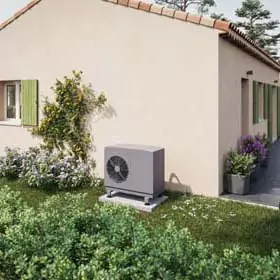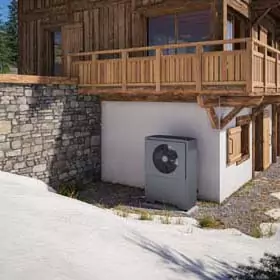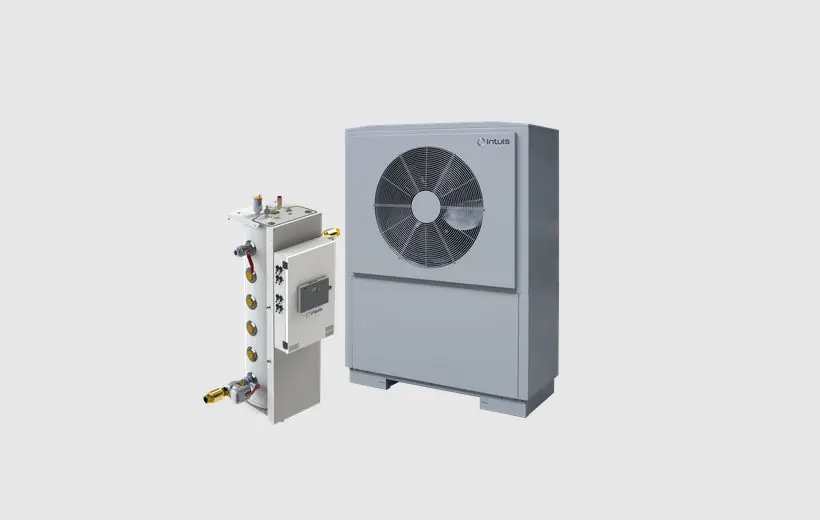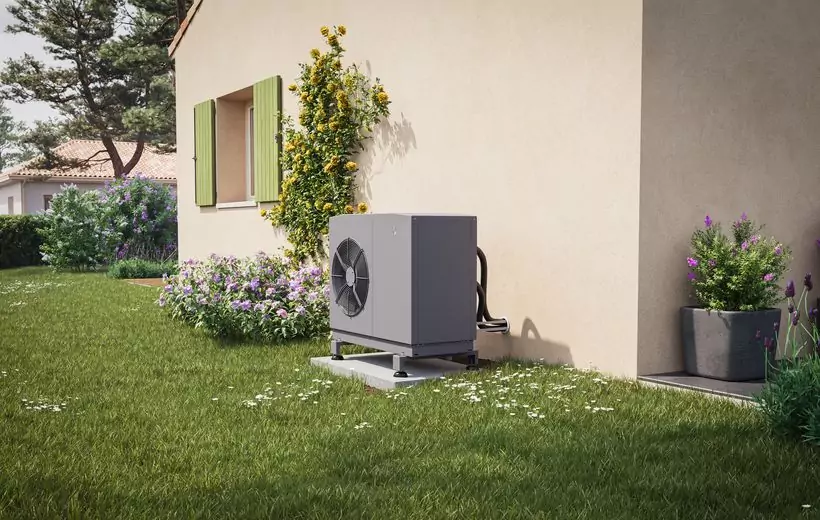

Table of contents

Table of contents
Key points for a heat pump installation project
Installing a heat pump requires careful planning. Before investing in a heat pump, it's essential to consider various key factors such as the type of energy used, insulation, the size and layout of your home. According to the AFPAC (French Association for Heat Pumps), it is recommended to consult multiple contractors and obtain different quotes.
In general, here are the fundamental steps for preparing an installation project:
- Thermal and Technical Study (project feasibility, integration process, adaptability).
- Economic Study (consideration of available incentives, comparison of offers).
- Site-Specific Requirements (required distances, constraints, etc.).
Afterward, the actual installation process begins, including:
- Sizing (dimensioning is a legal requirement to qualify for financial incentives; manufacturers provide tools for installers to analyze your project).
- Installation prerequisites.
- Quote comparisons.
- Preparation of the installation.
For a successful installation, a minimum of two people is typically required. Installing the equipment may involve plumbing and electrical skills, as well as handling refrigerants (for split-system heat pumps), requiring the expertise of a refrigeration technician.
The installation time varies significantly depending on whether existing equipment needs to be removed or modifications are necessary for the new installation. Note that monobloc heat pumps are usually quicker to install.
What is the Nature of the Project?
Several parameters should be considered before investing in a heat pump. Here are some key questions to refine your installation project:
- Is it a new construction or a renovation project?
- Is the heat pump replacing an existing unit?
- What is the heating area's size?
- Does the house have a hot water central heating system?
- Is the house well-insulated?
- What is the property's real estate assessment?
Answers to these questions will guide the selection of the appropriate heat pump model, so it's crucial to consult with a professional to make the right choice.

What Type of Heat Pump for My Project?
If your home is equipped with water radiators, fan-coil units, or underfloor/ceiling heating, you can install an air-to-water heat pump. This system extracts heat from the air to provide both heating and domestic hot water. Some reversible models can also cool the house in the summer, making them a robust and comfortable replacement for gas or oil heating systems. If high-temperature heat pumps are used, there may be no need to replace the radiators.
Note that to use reversible models, compatible emitters and the appropriate circuit installation are required. Cooling is only possible with underfloor or ceiling heating and fan-coil units. The circuit should be thermally insulated to prevent condensation and water damage.
Air-to-air heat pumps, on the other hand, extract heat from outdoor air and redistribute it indoors using fan-coil units. They tend to be a bit noisier and often require supplementary heating methods (e.g., wood stoves or electric radiators) to heat the entire house, as they usually only serve the main living space. Air-to-air heat pumps do not produce domestic hot water, but many models are reversible and function as air conditioners in the summer.

High, Medium, or Low Temperature: Which Heat Pump to Choose?
The choice of high, medium, or low-temperature heat pump depends on the heating system's emitters:
- High Temperature: Suitable for heating systems that require water temperatures up to 70°C. Ideal for replacing existing oil, gas, or coal-fired systems, high-temperature heat pumps like the HTi 70°C offer efficient heating.
- Medium Temperature: Suitable for relatively recent or well-insulated installations with radiators operating at temperatures between 45 and 55°C.
- Low Temperature: Used in new constructions or older buildings with underfloor or ceiling heating systems. These systems have the advantage of being energy-efficient, with better heat pump performance.
Note: Intuis heat pumps perform well across all three segments.
Monobloc or Split Heat Pump?
Air-to-water heat pumps come in two categories: monobloc and split systems.
- Monobloc Heat Pump: In a monobloc heat pump, all four components (evaporator, compressor, condenser, expansion valve) are located in the outdoor unit. A hydraulic connection (water from the heating or domestic hot water network) runs between the two units, rather than a refrigerant. The entire refrigerant cycle occurs within the outdoor unit.
- Split Air-to-Water Heat Pump: In a split system, the outdoor unit contains the evaporator, compressor, and expansion valve, while the condenser is located in the indoor unit. Refrigerant connections link the two units. Split systems usually require the services of a refrigeration technician for installation and may have slightly higher indoor noise levels.
Defining the Placement
To optimize heat pump performance, follow specific recommendations for installation:
Ideally, place the outdoor unit to the south, sheltered from prevailing winds and drafts. Ensure it has enough space. Due to potential noise, position it away from windows (yours and your neighbors').
Note: The greater the distance between the outdoor and indoor units, the lower the performance due to thermal losses along the route.
If you have a central heating system, consider placing the indoor unit in the garage, laundry room, or utility area.
Finding the Right Installer
To ensure a reliable heat pump installation, it is highly recommended to hire a qualified professional certified as RGE QualiPac. They can provide guidance on selecting the most suitable heat pump for your project in terms of model and capacity, as well as help you achieve energy savings. Additionally, professional installation may make you eligible for financial incentives. Intuis collaborates with accredited professionals to provide you with the best expertise possible.




